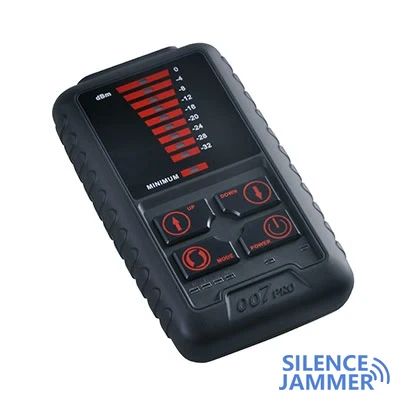1. Natural Heat Dissipation
Utilizing Convection Vents for Cooling
High-power mobile phone signal jammers employing natural heat dissipation typically feature fully sealed heat dissipation enclosures. The enclosure acts as both the host and the radiator, housing components such as the switching power supply and radio frequency module. Constructed from aluminum, the enclosure is die-cast using various molds. These jammers are often deployed in environments with harsh conditions, such as areas with excessive sand or dust, or locations requiring explosion-proof enclosures like gas stations and chemical warehouses. The design aims to ensure wide coverage, robust adaptability to harsh conditions, and the continuous operation of internal radio frequency modules through natural heat dissipation.

2. Fan Cooling
Incorporating Highly Efficient Cooling Fans
Several types of mobile phone signal jammer utilize auxiliary fans for heat dissipation. These jammers feature aluminum profile radiators installed within the chassis shell, accommodating RF modules and power components. Heat dissipation occurs in two stages. Firstly, heat is extracted from within the chassis, and external air is circulated inside to facilitate convection, transporting heat to the external environment. Secondly, fans installed in the radiator module's heat dissipation area further dissipate heat generated by specific components, ensuring the RF module's normal operation.
3.Heat Sink for Heat Dissipation
Utilizing Aluminum Alloy Heat Sinks
Among metallic materials, silver exhibits the highest thermal conductivity, followed by copper and aluminum. However, due to cost considerations, silver is rarely used for heat dissipation, while copper, though efficient, may not dissipate heat rapidly. This can result in the formation of an invisible heat shield within confined spaces, particularly during prolonged operation in hot weather. Aluminum, on the other hand, offers an ideal solution, being lightweight, robust, and efficient in heat conduction and dissipation. Notably, mobile phone signal jammer power amplifiers from Ningbo Dazhan Electronic Technology Co., Ltd., utilize cast aluminum alloy material paired with copper strips for rapid heat conduction and dissipation via aluminum heat sinks, maximizing heat dissipation area.
The power amplifier's contact surface, prone to heat generation, features thickened copper for enhanced heat absorption. Through efficient transfer to the aluminum alloy, heat is rapidly dissipated into the surrounding air via convection. Temperature-sensitive controls activate the fan to regulate airflow speed based on detected heat levels, ensuring optimal dissipation.
Internal component-generated heat is expelled, creating convection currents that circulate surrounding cool air, providing an efficient heat dissipation mechanism combining internal and external elements.


